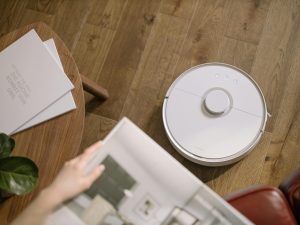3D-Printed Appliance Manufacturing: Rapid Prototyping and Customization
The world of manufacturing is constantly evolving, and one of the most revolutionary advancements in recent years has been the implementation of 3D printing technology. This cutting-edge technology has paved the way for a new era of rapid prototyping and customization in the production of appliances. With the ability to quickly create prototypes and customize products, 3D-printed appliance manufacturing has dramatically changed the game for manufacturers in terms of speed, cost, and quality. In this article, we will delve into the world of 3D-printed appliance manufacturing, exploring the process, benefits, and potential for the future.
The Process of 3D-Printed Appliance Manufacturing
The process of 3D-printed appliance manufacturing involves using digital designs to create physical products using layering technology. This technique allows for the precise and accurate production of complex shapes and designs, resulting in high-quality end products. The process begins with a digital design, which is then converted into a series of thin layers by specialized software. These layers are then printed one at a time, gradually building up the final product.
One of the most significant benefits of 3D printing is its speed. With traditional manufacturing methods, creating prototypes and custom products can be a time-consuming and costly process. However, 3D printing eliminates the need for expensive molds or tooling and can produce a prototype in a matter of hours or days, depending on the complexity of the design. This rapid prototyping allows manufacturers to test and make changes to their products more quickly, speeding up the overall production process.
Customization in Appliance Manufacturing
One of the most significant advantages of 3D-printed appliance manufacturing is the unparalleled level of customization it offers. With traditional manufacturing methods, mass production of identical products is the norm, resulting in a lack of variety and personalization for customers. However, 3D printing allows for the production of one-off or highly customized products at a relatively affordable cost.
For appliance manufacturers, this means the ability to create products that perfectly fit the individual needs and preferences of their customers. For example, a 3D-printed refrigerator door handle can be made to fit the exact measurements and grip of a customer’s hand, providing a level of comfort and convenience that was not possible before. This level of customization has the potential to drastically change the appliance industry, as it allows for more personalized and tailored products that cater to the specific needs and preferences of consumers.
The Advantages of 3D-Printed Appliance Manufacturing
In addition to its speed and customization abilities, 3D-printed appliance manufacturing offers several other notable advantages. One of the most significant benefits is cost-effectiveness. Traditional manufacturing methods often require expensive tooling, molds, and materials, which can be a significant barrier for smaller manufacturers or those looking to experiment with new designs. With 3D printing, these costs are significantly reduced, making it more accessible and cost-effective for businesses of all sizes.
Moreover, 3D printing also allows for more sustainable production. This is due to the fact that it reduces material waste and uses only the amount of material necessary for each product, resulting in less energy consumption and fewer greenhouse gas emissions. In today’s environmentally-conscious world, this is a significant advantage for manufacturers, as it allows them to reduce their carbon footprint and appeal to consumers who prioritize sustainability when making purchasing decisions.
The Future of 3D-Printed Appliance Manufacturing
The potential for 3D-printed appliance manufacturing is vast, and the technology is continuously improving and evolving. In the future, we can expect to see even more personalized and efficient production methods, with products that are tailored to meet the specific needs and preferences of consumers. Additionally, as the technology becomes more widespread and accessible, we are likely to see a shift towards more localized production, reducing the need for global supply chains and transportation costs.
In conclusion, 3D-printed appliance manufacturing is revolutionizing the industry, providing manufacturers with faster, more cost-effective, and sustainable production methods. The ability to create highly customized products is changing the game for both businesses and consumers, paving the way for a more personalized and efficient approach to appliance manufacturing. As technology and techniques continue to advance, the future is bright for 3D-printed appliance manufacturing.





